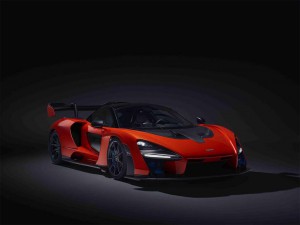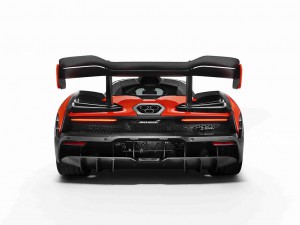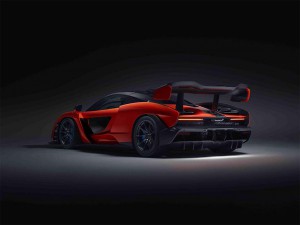
McLaren's new Senna is a $1 million hypercar with a 500-unit production run that is already sold out.
At first glance, it seems more than appropriate that the “ultimate” McLaren would be named the Senna; after all, Ayrton Senna is readily ranked among the best drivers to ever dominate the Formula One circuit.
The new entry into the British marque’s Ultimate Series, and the successor to the older P1, the new McLaren Senna is meant to dominate both track and street, thanks to a twin-turbo 4.0-liter V-8 that punches 789 horsepower and 590 pound-feet of torque to the rear wheels.
“The McLaren Senna is a car like no other: the personification of McLaren’s motorsport DNA, legalized for road use but designed and developed from the outset to excel on a circuit,” declares Mike Flewitt, chief executive officer, McLaren Automotive.
The $1 million hypercar made its debut last weekend at McLaren’s headquarters in Woking, just outside London. It enters an increasingly crowded hypercar market but apparently has clicked with potential buyers, the British maker revealing that all 500 of the Sennas it plans to build have already been spoken for.
(McLaren teases next-gen P15 hypercar. For a look, Click Here.)
For that sort of money McLaren gives you an incredibly fast machine, one expected to hit 60 in less than 3 seconds and top 210 mph – though the maker has yet to release official numbers. But like a true track car, the Senna is stripped of many basic features. There aren’t even power windows, something that would just add more weight.
And, as with other McLarens, the Senna opts for a carbon fiber “Monocage” chassis and body. That helps hold weight down to a mere 2,641 pounds – the lightest McLaren since the company’s legendary F1 model of decades past.
The body was clearly shaped for the wind tunnel and features a large rear wing and other active aero components meant to not only keep it slippery but ensure it stays firmly planted on the ground as it blasts past the 200 mph mark.
(Click Here for a look at the new McLaren 720S.)
The Senna features double wishbones at both ends. It’s part of a hydraulic suspension system controlled – along with the active aero bits and other vehicle functions – by what McLaren has dubbed the RaceActive Chassis Control II system. Shift the controller to race track mode and the already low-slung hypercar hunkers down even lower.

With that big rear wing and other active aero components, the new Senna is slippery and holds the road.
The McLaren Senna rides on Pirelli Trofeo R rubber wrapped around track-suitable center-lock wheels. They barely cover what the automaker calls, “the most advanced (braking system) ever fitted to a McLaren road car, using carbon ceramic discs and motorsport technologies to deliver extreme performance.”
But the heart of this beast is the M840TR engine, a beefed-up version of the M840T currently found in the McLaren 720S. It’s paired with a seven-speed dual-clutch gearbox. And it sucks down air fed to it from a roof scoop almost directly lifted from McLaren’s latest F1 track model.
(The devil’s in the details — in this case a 5,000-hp engine powering the Devel Sixteen. Click Here for a first look.)
Expect to see the McLaren Senna makes its formal debut at the Geneva Motor Show next March. We’re also expecting to see the maker launch a dedicated race series to let owners exercise their hypercars in the way they’ve been designed for.

